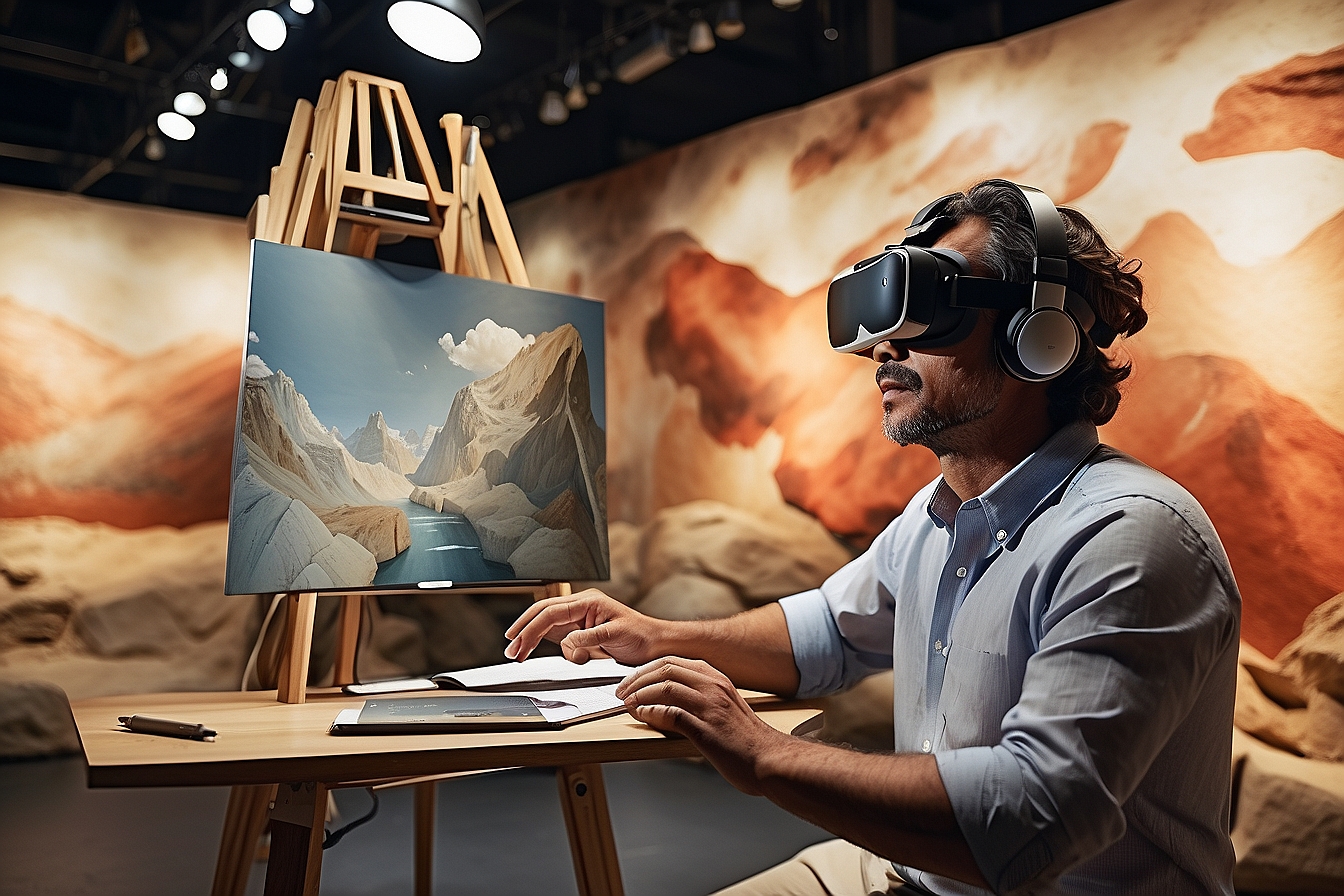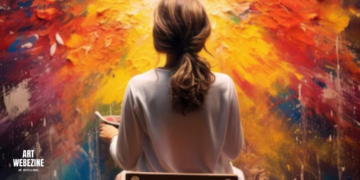The Alchemical Symphony: Harmonizing Art and Technology in the Modern Age
Introduction
Welcome, dear readers, to a captivating exploration of the mesmerizing realm where art and technology converge. In this journey, we shall uncover the profound impact that technology has had on the world of art, giving rise to an era of boundless creativity and innovation. Prepare to be enthralled as we traverse through various subtopics, each unveiling a unique facet of this intricate relationship.
Definition of Art and Technology
To embark on our enlightening voyage, it is essential that we first establish a solid foundation by defining the key components of our narrative: art and technology. Art, in its broadest sense, encompasses various forms of human expression that evoke emotions or convey ideas through aesthetics.
It encompasses painting, sculpture, music, dance, and literature—an expansive tapestry woven by human imagination. On the other hand, technology refers to both the tools and techniques devised by humans to solve problems or fulfill specific purposes.
It encompasses machines, devices, and software programs—all harnessed to simplify our lives or augment our capabilities. Often perceived as belonging solely to scientific domains like engineering or computer science; however, technology’s transformative influence has extended far beyond these confines.
The growing intersection between the two fields
In recent times, especially with rapid advancements in digital technologies, art and technology have become inseparable bedfellows. Their interplay has ushered in extraordinary possibilities for artists worldwide; empowering them with new mediums for self-expression and enabling previously unattainable levels of creativity.
This synergy between art and technology is not merely a contemporary phenomenon but has deep roots in history. As early as the advent of photography in the 19th century, which revolutionized how artists captured moments, we witnessed an initial glimpse into how technological advancements could shape artistic practices.
Fast forward to the late 20th century, and we witnessed the birth of digital art, marking a seismic shift in artistic landscapes. With computers becoming increasingly accessible and sophisticated software opening doors to novel artistic techniques, artists began embracing technology as a medium itself.
This heralded an era where pixels danced on screens and virtual canvases came alive with ethereal strokes. So, my fellow seekers of intellectual stimulation, fasten your seatbelts and brace yourselves for a captivating exploration of the myriad ways that art and technology intertwine in our modern world.
Strap on your curiosity as we delve into digital art, interactive installations, AI-assisted creativity, video games as artistic expressions, bio-art that amalgamates biology with technology, and even technology’s role in preserving and restoring art. Prepare to be dazzled!

Historical Overview
Early Examples of Technology Influencing Art
A journey into the intersection of art and technology takes us back to the early days when pioneering artists began embracing technological advancements as tools for creative expression. One prominent example is the invention of photography in the 19th century, which revolutionized artistic practices. With photography, artists could capture moments in time with unprecedented precision and detail, challenging traditional painting techniques that focused on subjective interpretations.
The advent of cameras allowed artists to explore new modes of representation, blending realism with artistic vision. Photography not only changed the way visual art was created but also influenced other artistic disciplines such as painting and sculpture.
Artists found inspiration in capturing fleeting moments, exploring light and shadow, and experimenting with perspectives previously unattainable through traditional means. Pioneers like Louis Daguerre and William Henry Fox Talbot paved the way for future generations by pushing the boundaries of what was possible through technology.
The Rise of Digital Art in the Late 20th Century
The late 20th century witnessed a seismic shift in how art was created and consumed with the advent of digital technologies. This marked a significant turning point for artists who embraced computers as their medium. Digital art emerged as a new form of expression, harnessing computational power to create visually stunning works that pushed boundaries like never before.
The rise of personal computers democratized access to digital tools, enabling artists from diverse backgrounds to experiment with endless possibilities. Digital painting and drawing techniques flourished, offering artists an array of virtual brushes, colors, and textures at their fingertips.
Moreover, digital platforms facilitated collaboration among artists globally by allowing them to share their work instantly across networks. The late 20th century also witnessed breakthroughs in generative art where algorithms became co-creators in the artistic process.
Artists began exploring mathematical patterns, procedural generation, and randomness to produce mesmerizing visuals that blended human creativity with computational logic. With the advent of virtual reality (VR) and augmented reality (AR), artists opened doors to immersive experiences that transported audiences into captivating digital realms.
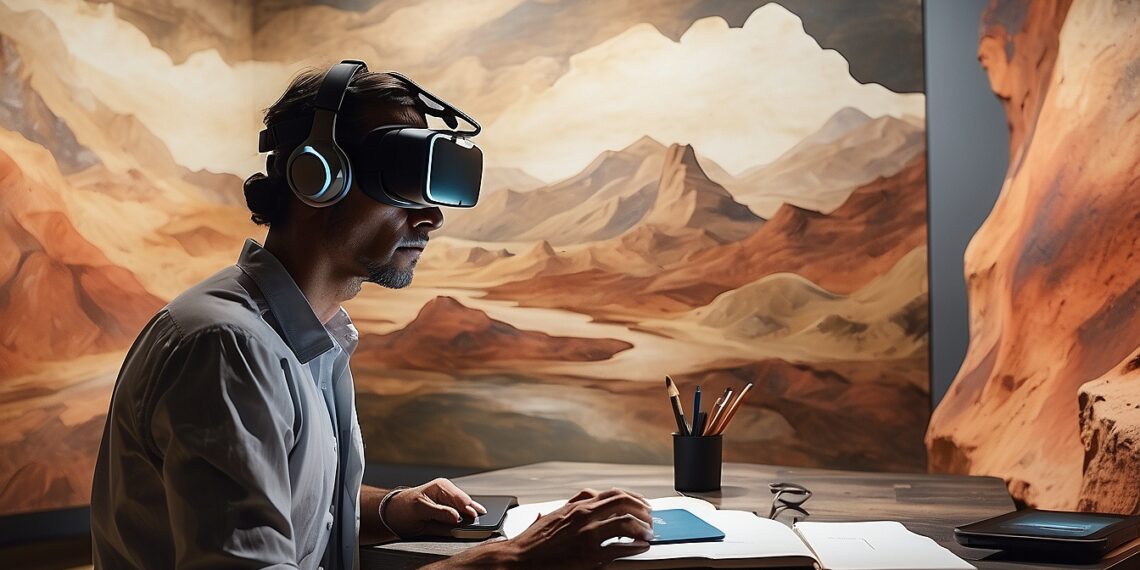
Digital Art
The Evolution of Artistic Expression in the Digital Age
In the realm of artistic creation, technology has become an invaluable tool, transforming traditional art forms and giving birth to new mediums. Digital art, a marriage between computers and creativity, has emerged as a vibrant and dynamic field that pushes the boundaries of imagination. Through the use of computers and specialized software, artists are able to explore new horizons, experiment with innovative techniques, and create captivating works that captivate audiences worldwide.
Digital Painting and Drawing Techniques
Digital painting allows artists to wield virtual brushes on digital canvases with astonishing precision. Gone are the days of dealing with messy palettes or waiting for paint to dry; digital painting offers unparalleled flexibility and convenience. Artists can choose from a plethora of digital tools that emulate various traditional mediums such as oil, watercolor, or charcoal.
With just a few clicks, they can switch brush types or alter colors effortlessly. Moreover, drawing tablets have revolutionized the way artists bring their visions to life digitally.
These pressure-sensitive devices allow for natural hand gestures and strokes while offering seamless integration with drawing software. Artists can zoom in for minute details or zoom out for broad strokes without any limitations imposed by physical canvas sizes.
Generative Art and Algorithmic Creativity
Generative art harnesses the power of algorithms to produce art pieces that evolve dynamically over time or respond directly to input from viewers. By relinquishing some control over the creative process to computer programs, artists explore serendipity and unpredictability in their work.
Algorithms can generate patterns based on mathematical equations or random variables defined by artists themselves. These patterns could range from intricate fractal structures with mesmerizing complexity to abstract compositions that evoke emotions beyond human comprehension.
This fusion between human creativity and algorithmic intelligence not only challenges conventional notions about authorship but also opens new doors for artistic innovation. Artists can tap into the vast potential of machine-generated imagery to create visuals that transcend human imagination alone.
Virtual Reality (VR) and Augmented Reality (AR) Experiences
Virtual reality and augmented reality technologies have revolutionized the way we experience art. VR immerses viewers in virtual worlds where they can interact with and explore art in unimaginable ways. From walking through a digital gallery to even becoming a part of an artwork, VR redefines the traditional limitations of space and time.
Augmented reality, on the other hand, overlays digital content onto our physical reality. It allows artists to add layers of virtual elements to real-world environments, creating a sense of magic and wonder.
With AR apps and devices becoming more accessible, viewers can witness sculptures come to life or murals transform before their eyes by simply pointing their smartphones or tablets at them. These emerging technologies offer artists unparalleled opportunities for storytelling, engagement, and interactivity.
Virtual and augmented realities unlock limitless possibilities for artistic expression that blur the lines between imagination and reality. In this digital age, artists are harnessing the power of technology to reshape creative landscapes, redefine art forms, and engage audiences like never before.
The realm of digital art encompasses a vast array of possibilities, from mind-bending generative artwork created using complex algorithms to immersive virtual experiences that transport viewers into captivating new realms. By embracing computers as creative partners rather than mere tools, artists are pushing boundaries and creating awe-inspiring works that captivate our hearts and minds.
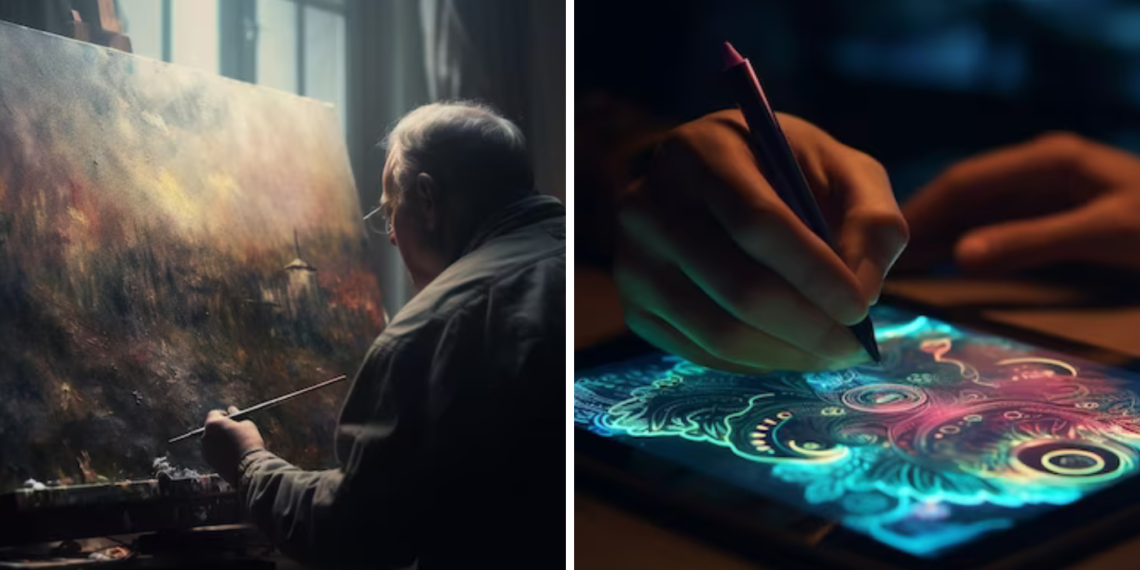
Interactive Installations
Blurring boundaries between artwork and audience participation
Art has always been a spectator’s delight, but in recent years, there has been a fascinating shift towards art that is not only meant to be observed but also actively engaged with. Interactive installations have emerged as captivating creations that blur the boundaries between the artist and the audience. These works invite viewers to become participants, encouraging them to play an active role in shaping their own artistic experience.
Kinetic sculptures and interactive installations in galleries and museums
Galleries and museums around the world have embraced interactive installations as a way to engage visitors on a deeper level. Kinetic sculptures, for example, are masterpieces that come alive through movement. As you walk into these spaces, you might find yourself mesmerized by sculptures with mechanical components that rotate, sway, or pulsate rhythmically.
By inviting physical interaction, these artworks breathe life into static spaces and create an immersive environment where viewers can marvel at the harmonious dance of technology and art. Interactive installations also make use of cutting-edge technology such as sensors, motion tracking systems, and touchscreens to offer visitors a truly immersive experience.
Imagine walking into a gallery where your every step triggers subtle changes in light or sound. Through motion tracking technology, your movements become part of the artwork itself.
Touchscreens allow for even more direct engagement by enabling visitors to manipulate digital elements within an installation with just a swipe or tap of their fingers. The result is an incredible fusion of creativity and innovation that brings art to life while transforming viewers into active participants.
By blurring the lines between observer and creator, interactive installations challenge traditional notions of passive art consumption. They ignite curiosity and foster personal connections between audience members and artworks like never before.
These unconventional experiences not only redefine what it means to be an artist but also expand our understanding of the possibilities that lie at the intersection of art and technology. So, next time you visit a gallery or museum, be prepared to immerse yourself in a world where art becomes an interactive adventure.
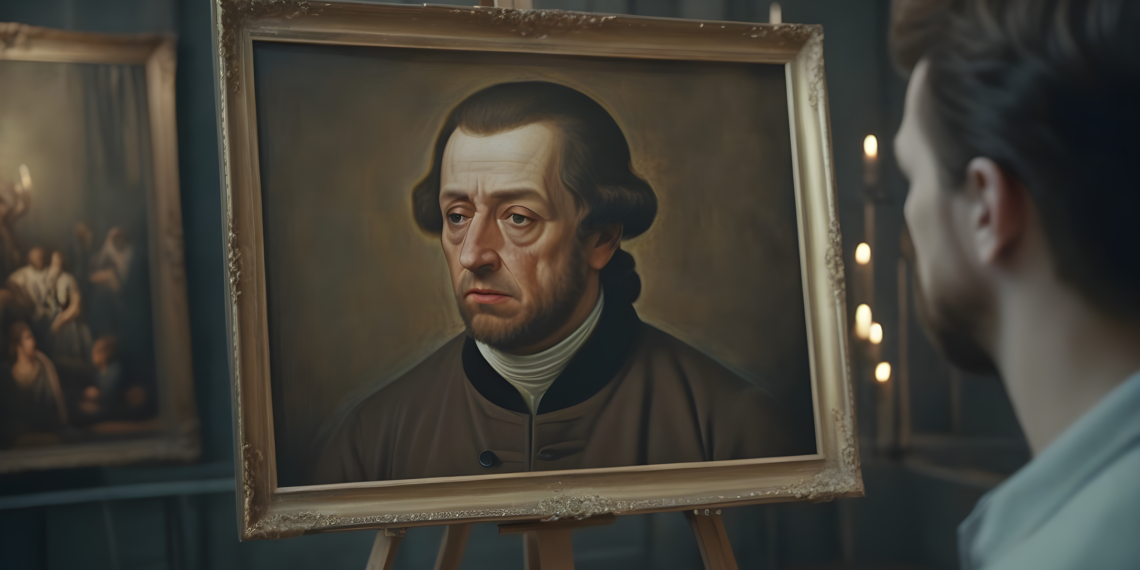
Artistic Applications of Artificial Intelligence (AI)
The Creative Potential of AI Algorithms
Artists have always sought new tools and techniques to push the boundaries of their creativity, and in recent years, the integration of artificial intelligence (AI) algorithms has opened up exciting possibilities. AI is being utilized to generate or enhance artistic creations in various forms.
For instance, machine learning algorithms have been trained to recognize patterns in images, enabling artists to explore new visual territories and create stunning works that might have been unimaginable before. Moreover, AI-powered style transfer algorithms allow artists to apply the characteristics of famous artworks onto their own pieces, resulting in mesmerizing blends of styles.
From Pixels to Melodies: The Role of AI in Artistic Expression
AI’s impact on artistic expression goes beyond the visual arts; it extends into the realm of music composition as well. Machine learning algorithms can analyze vast amounts of musical data and generate original compositions based on learned patterns and structures.
This fusion between human creativity and algorithmic capabilities has led to astonishing compositions that challenge traditional notions of authorship. Another intriguing application is the use of AI-powered chatbots as creative collaborators or subjects.
Artists engage with these virtual entities by having conversations or inputting prompts, which then inform the bot’s responses or generate content for artwork. This interaction blurs the line between human and machine creativity, spawning thought-provoking pieces that explore themes such as identity, consciousness, and the nature of art itself.
Artistic Expression in Video Games
Merging Artistry with Interactive Gameplay
Video games have evolved into a vibrant medium for artistic expression, effectively merging storytelling, visual aesthetics, and game mechanics into immersive experiences that captivate millions worldwide. The evolution of video game graphics showcases remarkable advancements over time.
From humble pixelated beginnings to lifelike environments with breathtaking details, video games now stand as a legitimate art form in their own right. The marriage of cutting-edge technology and artistic vision has transformed games into visually stunning and emotionally resonant experiences.
Narrative-driven Games: Interactive Storytelling at its Finest
In addition to their visual splendor, video games offer unique opportunities for interactive storytelling. Narrative-driven games immerse players in richly crafted worlds where they shape the plot and characters through their choices and actions.
This dynamic interplay between player agency and narrative structure creates a sense of engagement like no other medium can provide. As players become active participants in the unfolding story, they forge personal connections with the characters and experience emotions on a deeply personal level.
Bioart
Merging Science, Technology, and Artistry
Bioart represents an avant-garde movement that merges biology, genetics, and technology to explore new frontiers of artistic expression. Genetic engineering techniques are employed as a medium for creating thought-provoking artworks that challenge our perceptions of life, identity, and ethics. Artists delve into the realm of genetic manipulation to create living organisms or modify existing ones as part of their installations or performances.
The Beauty of Life Itself: Living Organisms in Art
In bio art installations or performances, living organisms take center stage as subjects or collaborators. By incorporating living organisms such as bacteria, cultures, or plants into their works, artists invite viewers into an immersive experience that blurs the boundaries between artifice and nature. These creations prompt contemplation about our relationship with living beings while raising ethical questions about our manipulation of life forms.
Art Conservation & Restoration with Technology
Preserving Cultural Heritage through Technological Innovations
Art conservation and restoration have undergone a revolution thanks to technological advancements. From digitizing and archiving precious artworks to employing advanced imaging techniques, technology has empowered conservators and restorers to preserve cultural heritage more effectively. High-resolution scanning and 3D modeling allow for in-depth analysis of artworks, aiding in their preservation and allowing experts to uncover hidden details and restore them to their original glory.
Augmented Tools for Art Restoration
In the realm of art restoration, augmented reality (AR) has emerged as a powerful tool. AR applications enable experts to overlay digital restoration information onto physical artworks, providing guidance during the delicate process of restoring damaged or deteriorated pieces. This innovative use of technology ensures that restoration efforts are accurate, informed, and faithful to the artist’s original vision.
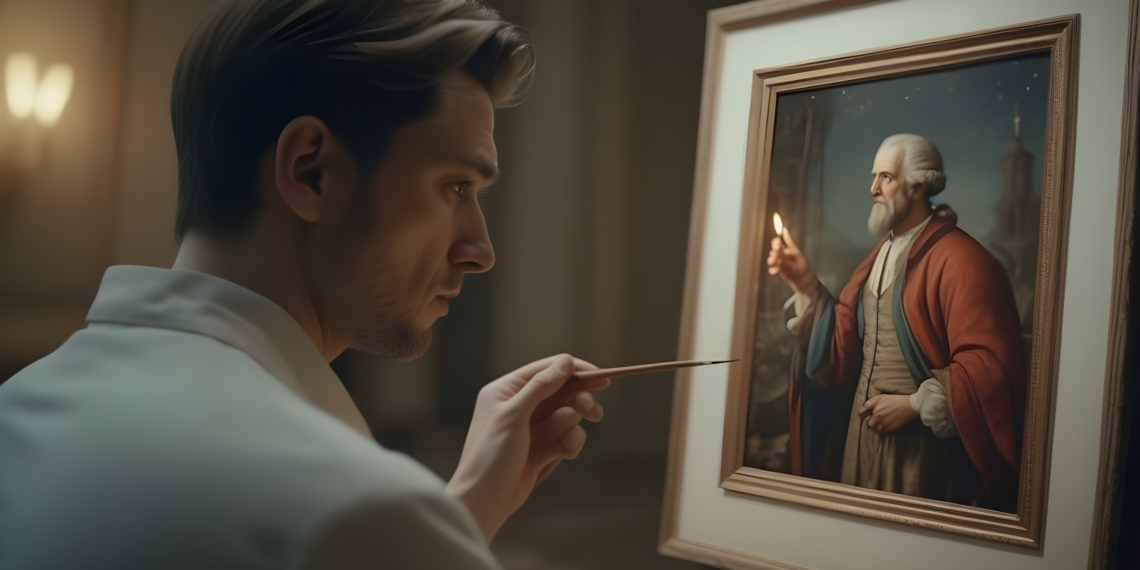
Conclusion
As art continues to intersect with technology, exciting possibilities arise for artists and audiences alike. The infusion of artificial intelligence algorithms into artistic creation offers new avenues for exploration and collaboration between human creativity and computational power. Video games have become immersive art forms that captivate players through their visual splendor and interactive narratives.
Bioart pushes boundaries by merging biological science with artistic expression, while technology enhances conservation efforts to preserve humanity’s cultural heritage. The future holds even greater promise as technological advancements continue unabated.
From AI-driven creative processes to virtual reality experiences that transport us into new realms of artistic expression, we can look forward to an era where innovation merges seamlessly with artistry. By leveraging these technologies responsibly and embracing their potential as tools for human expression, we can create a vibrant future where imagination knows no bounds—a future where art flourishes in harmony with the ever-evolving world of technology.

